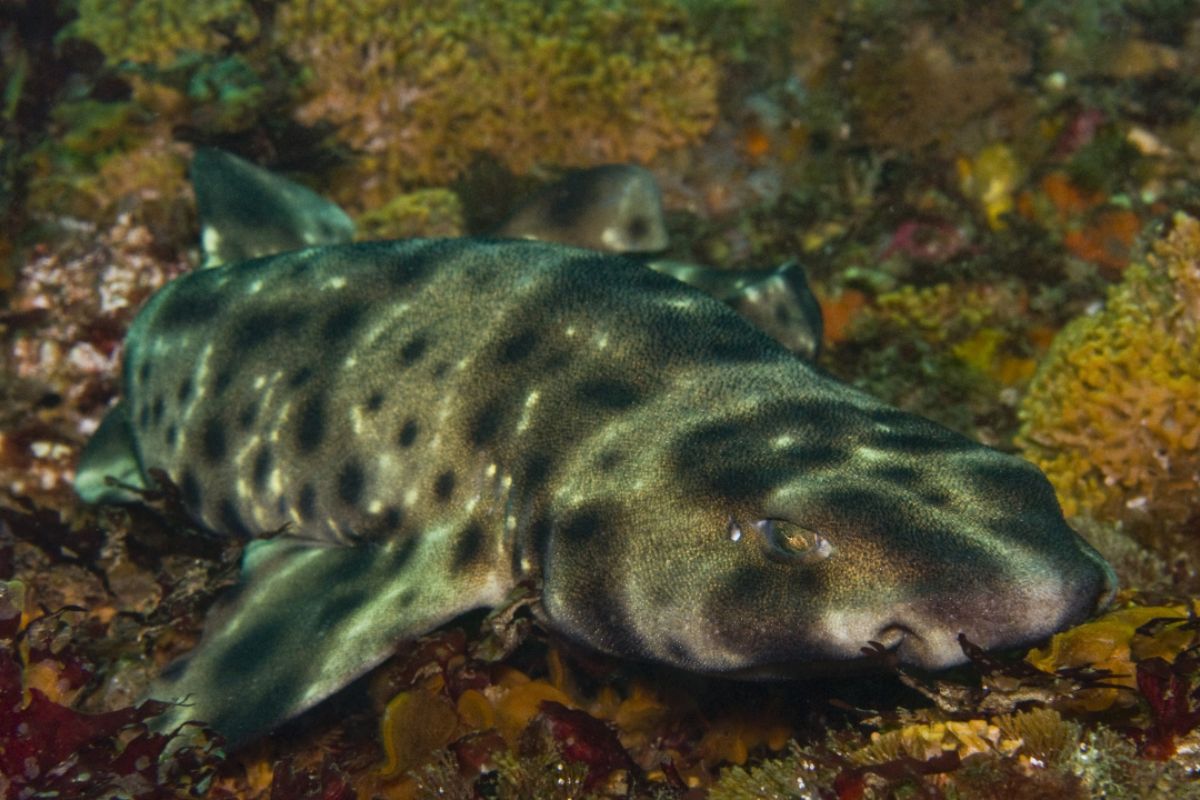Show table of content Hide table of content
In a groundbreaking marine discovery, scientists have captured footage of the painted swellshark (Cephaloscyllium pictum) in its natural habitat for the first time. This rare species, previously only documented in fish markets, was filmed off the coast of Timor-Leste in Southeast Asia. The discovery marks a significant milestone in marine biology and highlights how much remains unknown in our vast oceans.
Rare underwater species documented alive in its natural habitat
Marine biologists from Rhodes University in South Africa made history when they recorded the first-ever live footage of the painted swellshark during an expedition to the waters of Timor-Leste. This small nation in Southeast Asia bordering Indonesia has proven to be home to this elusive shark species that had previously only been observed as catches in Indonesian fish markets.
The research team, conducting a deep-sea exploration project supported by the National Geographic Society, spotted the distinctive shark at depths between 536 and 570 meters beneath the Indian Ocean’s surface. This remarkable finding illustrates how extremely rare sea creatures continue to be discovered in unexpected circumstances.
“Finding this species alive in its natural environment represents a significant breakthrough,” explains Dr. Louw Claassens, zoologist at Rhodes University and lead author of the study published in Oryx journal on March 13, 2025. “Until now, researchers relied exclusively on specimens captured for markets or by fishermen to study this species.”
Despite oceans covering approximately 71% of Earth’s surface, scientists have explored only about 5% of marine environments thoroughly. The painted swellshark discovery underscores the vast potential for new findings in the remaining unexplored regions, particularly in deep-sea ecosystems where accessibility remains challenging.
Distinctive features of the painted swellshark
The painted swellshark belongs to the Cephaloscyllium genus, known for several remarkable physical characteristics that distinguish it from other shark species. Most notably, this shark exhibits a distinctive pattern of brown and white spots across its body, complemented by an unusually broad head structure that gives it a unique appearance among benthic shark species.
Perhaps the most fascinating aspect of this species is its biofluorescent properties. These sharks possess the ability to absorb light at specific wavelengths and emit it at different wavelengths, creating a subtle glow effect under certain lighting conditions. This biofluorescence might serve various evolutionary purposes, from communication with other sharks to prey attraction or camouflage strategies in their deep-water habitats.
Animals A female sea lion refuses to mate with a male, causing a fight and the closure of the zoo.
Unlike some terrifying deep-sea predators recently discovered, the painted swellshark has developed distinctive defense mechanisms rather than aggressive predatory behaviors. When threatened, these sharks can double their apparent size by gulping water, making themselves more challenging for potential predators to consume.
Another remarkable defensive behavior involves the shark bending its body into a “U” shape by grasping its tail with its mouth. This posture increases its effective diameter, making it significantly more difficult for larger predators to bite or swallow. Additionally, these sharks commonly seek refuge in rocky crevices, using their patterned skin for effective camouflage against the seafloor.
Scientific significance beyond the discovery
The filmed encounter with the painted swellshark joins a growing list of significant marine findings in recent years. Much like cases where species thought extinct for decades suddenly reappear, this discovery reinforces how much remains unknown about marine ecosystems.
Bycatch remains a serious threat to painted swellsharks and similar species. These sharks often become unintended victims of commercial fishing operations targeting other species, raising concerns about population sustainability. Conservation biologists emphasize that understanding these sharks in their natural habitat is crucial for developing effective protection strategies.
Animals A hammerhead shark crashes down from the sky in South Carolina, halting a disc golf game.
The Timor-Leste expedition highlights the importance of international collaboration in marine research. While South African scientists led the project, cooperation with local authorities and regional experts proved essential. Such partnerships create comprehensive approaches to studying threatened marine species across their natural ranges.
Marine biologists point out that deep-sea environments face increasing pressures from human activities including deep-sea mining, bottom trawling, and climate change impacts. The painted swellshark’s habitat exists in regions potentially vulnerable to these threats, similar to how marine mammals face unprecedented challenges in their changing environments.
Future research directions
The Rhodes University team plans to continue their exploration of Timor-Leste’s waters, hoping to document additional painted swellshark specimens and potentially observe their behaviors, feeding patterns, and reproductive cycles. This ongoing research aims to fill substantial knowledge gaps about this mysterious species.
Scientists are particularly interested in studying the biofluorescent properties of the painted swellshark in greater detail. Understanding how and why these sharks evolved this characteristic could have implications for various applications, from marine conservation to biomimetic technologies.
Animals A wild elephant enters a convenience store and raids the food aisle.
The expedition team has installed underwater monitoring equipment in locations where the painted swellshark was observed. These systems will collect data over extended periods, potentially capturing additional footage and helping researchers better understand population dynamics and habitat preferences.
Unexpected encounters with rare marine species are becoming increasingly common as exploration technology improves. From the painted swellshark in Southeast Asia to surprising animal encounters in entirely different contexts, these discoveries reshape our understanding of biodiversity and adaptation.
As research continues, marine biologists hope these findings will strengthen conservation efforts and inspire further exploration of our ocean’s least-known regions, protecting rare species like the painted swellshark for future generations to study and appreciate.


